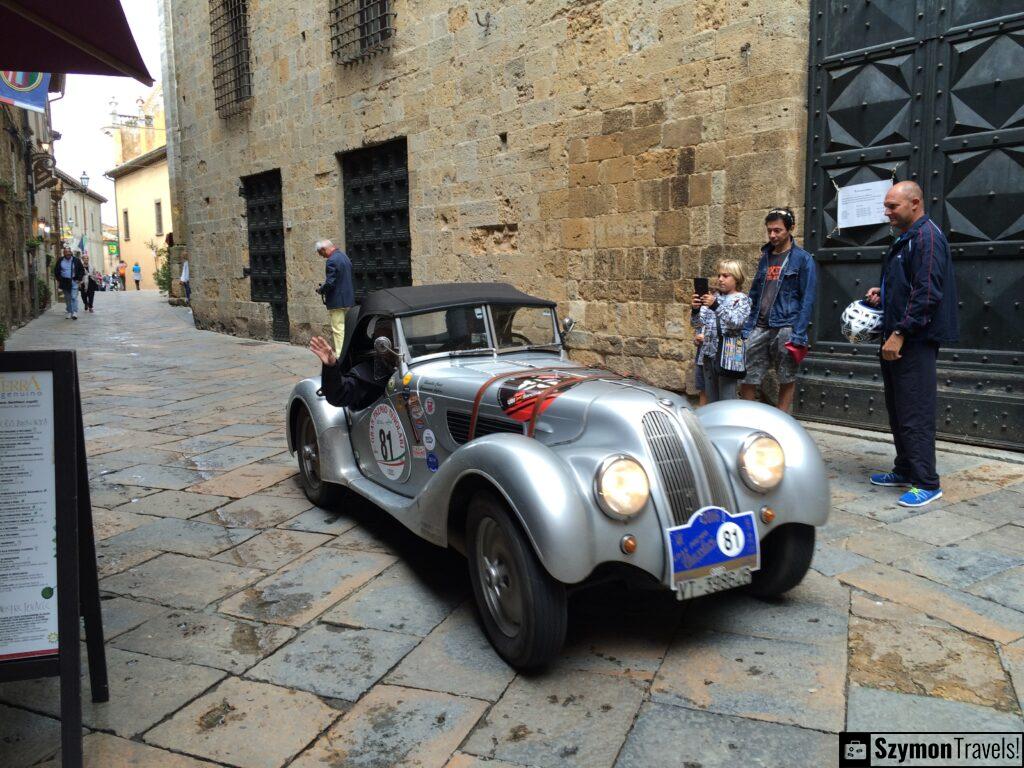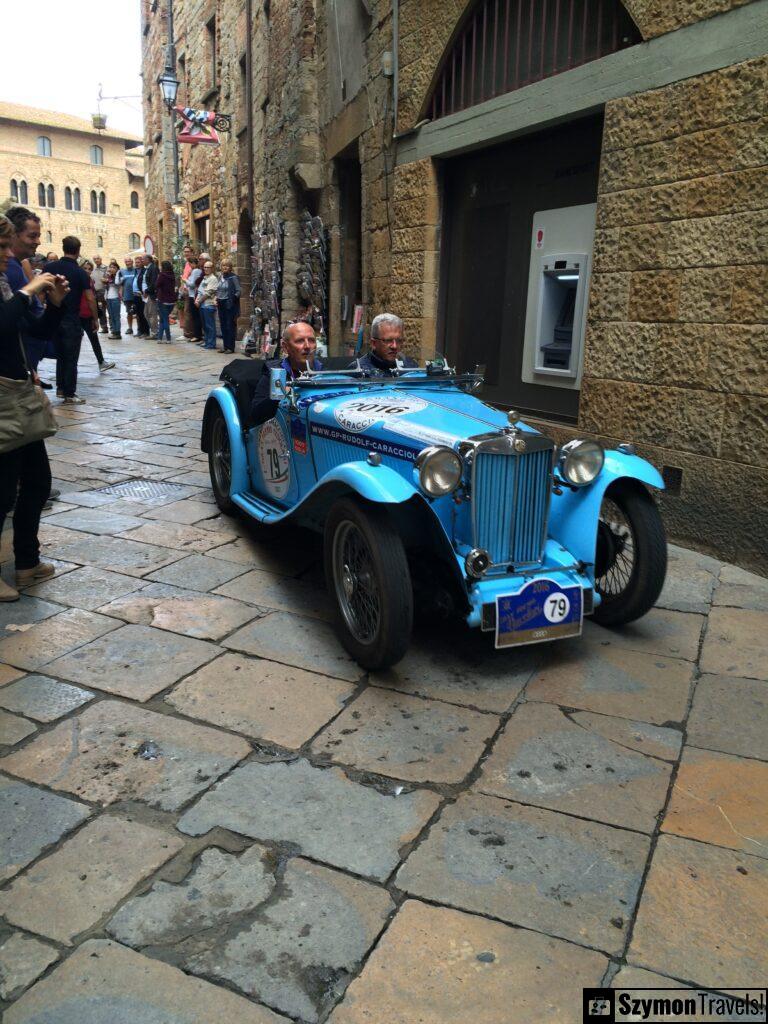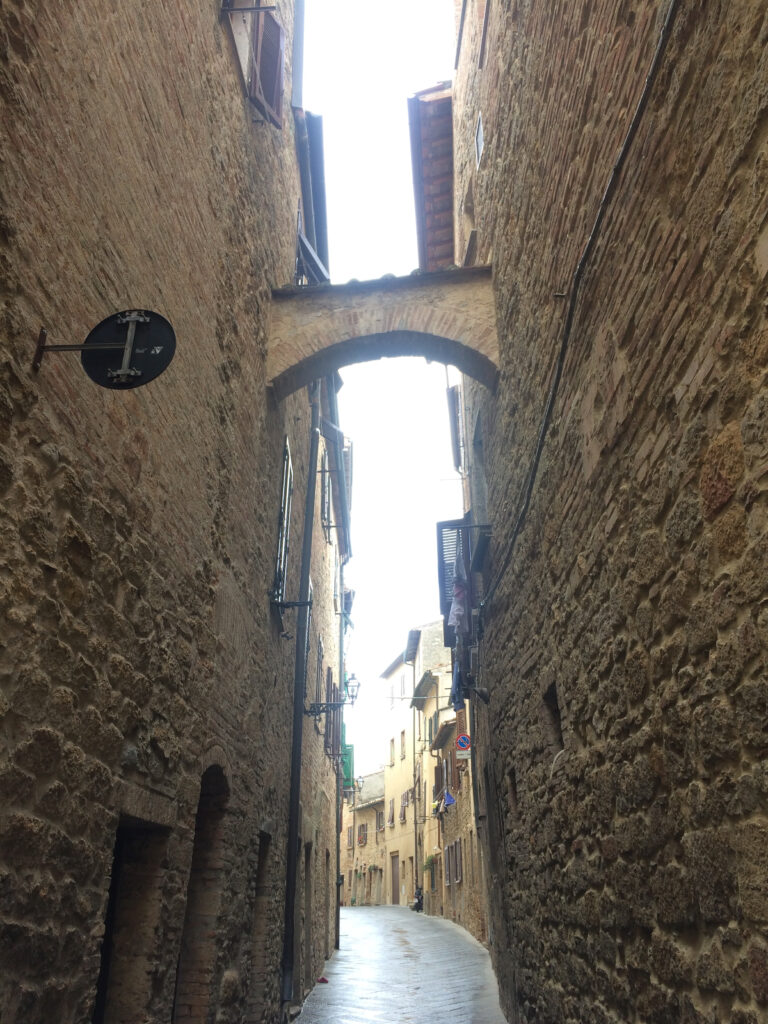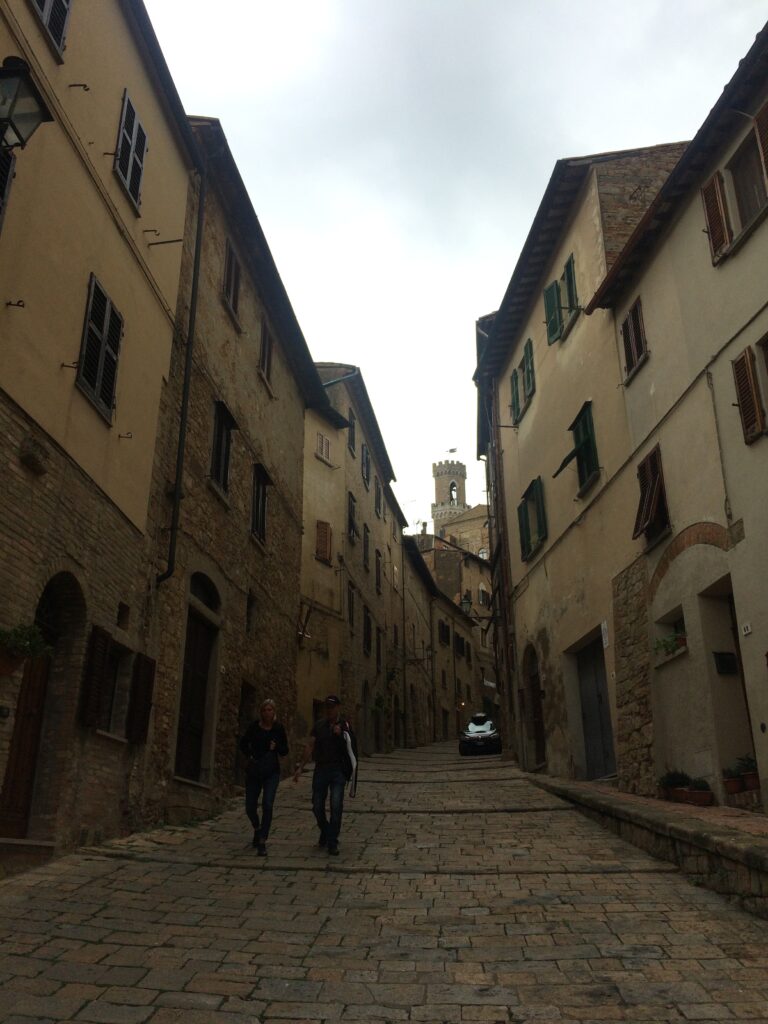
Volterra is a town and comune in the Tuscany region of central Italy. It is known for its well-preserved medieval and Etruscan ruins, as well as for its alabaster crafts. Volterra was an important Etruscan city and later a Roman municipality. It is located in the province of Pisa and the region of Tuscany. About 70 km southwest of Florence and about 30 km southeast of Pisa. Volterra is a hill town and is built on top of an extinct volcano.
During our visit to the city there was a classic cars event (see bellow and in the gallery at the bottom of this post).
Rated by Szymon
5.0 out of 5.0 stars
Volterra today
The city’s main attractions include the Piazza dei Priori, the Palazzo dei Priori, the Cathedral of Santa Maria Assunta. The Etruscan Museum and the Guarnacci Etruscan Museum. The town also has a number of churches and chapels. Among them are the Church of San Francesco, the Church of San Giovanni, and the Church of San Lino.
Volterra is also known for its traditional festivals, such as the “Gioco del Ponte” (Bridge Game) held annually in June, and the “Palio dei Rioni” (District Palio) held in August.
Past of Volterra
Volterra has a long history dating back to ancient times. It was founded by the Etruscans, an advanced civilization that thrived in central Italy between the 8th and 3rd centuries BCE. The Etruscans left behind impressive architectural and artistic remains in Volterra, including the Porta all’Arco. Monumental archway that once served as the main entrance to the city, and the Necropolis of Monterozzi, a large Etruscan burial ground.
During the Roman period, Volterra became a municipality and continued to be an important center of trade and industry. The Romans built several public buildings and infrastructure in the city, such as the Roman Theatre and the Roman Amphitheatre.
After the fall of the Roman Empire, Volterra was ruled by various barbarian tribes and later by the Lombards. During the Middle Ages, the city became an independent commune and developed into an important center of art and culture. Many of the city’s finest buildings were constructed during this time. The Cathedral of Santa Maria Assunta, the Palazzo dei Priori, and the Guarnacci Etruscan Museum.
In the early 16th century, Volterra came under the control of the powerful Medici family. They ruled as grand dukes of Tuscany. The Medici patronized the arts and supported the development of the city’s alabaster industry, which remains an important source of income for the city to this day.
Volterra has been well preserved through the centuries, and its historical and cultural heritage continues to attract visitors from around the world.
What to see?
- The Etruscan Museum: Delve into Volterra’s ancient history at this museum, which showcases an extensive collection of Etruscan artifacts, including sculptures, pottery, and tombs. See at Google Maps
- Medici Fortress: Visit the imposing Medici Fortress, an impressive Renaissance structure that offers panoramic views of the city and surrounding countryside. Explore its fascinating history and enjoy the breathtaking vistas. See at Google Maps
- Volterra Cathedral: Admire the stunning architecture of the Volterra Cathedral, also known as the Cathedral of Santa Maria Assunta. Its intricate facade, beautiful frescoes, and ornate interiors make it a must-see landmark. See at Google Maps
- Roman Theatre: Step back in time at the Roman Theatre, one of the best-preserved ancient theaters in Tuscany. Marvel at the well-preserved seating area and stage, and imagine the performances that took place here centuries ago. See at Google Maps
- Alabaster Museum: Discover the artistry of Volterra’s famous alabaster at the Alabaster Museum. Learn about the history of this local craft, see exquisite alabaster sculptures, and even watch artisans at work. See at Google Maps
- Palazzo dei Priori: Explore the Palazzo dei Priori, a remarkable medieval palace and one of the oldest town halls in Tuscany. Admire its grand architecture, visit the art gallery inside, and climb the tower for panoramic views. See at Google Maps
- Porta all’Arco: Marvel at the ancient Roman gate, Porta all’Arco, the main entrance to the Etruscan city. This well-preserved archaeological site offers a glimpse into Volterra’s ancient past. See at Google Maps
- Pinacoteca Civica: Art enthusiasts should not miss the Pinacoteca Civica, Volterra’s municipal art gallery. It houses a collection of Renaissance and Baroque masterpieces, including works by Rosso Fiorentino and Andrea della Robbia. See at Google Maps
- Teatro Persio Flacco: Visit the Teatro Persio Flacco, an intimate theater named after the Roman poet who hailed from Volterra. Catch a performance or simply admire the historic venue’s charming ambiance. See at Google Maps
- Piazza dei Priori: Immerse yourself in the heart of Volterra at Piazza dei Priori, the city’s main square. Take in the medieval architecture, enjoy a leisurely coffee at one of the outdoor cafes, and soak up the lively atmosphere. See at Google Maps
Classic Cars Event

During the Volterra Classic Cars event, the streets and squares of Volterra come alive with the beauty and elegance of vintage cars. Participants showcase their lovingly restored classic vehicles, ranging from iconic models of the early 20th century to stunning sports cars from the mid-20th century. Visitors have the opportunity to admire these automotive treasures up close and engage with their owners, who are often more than happy to share stories and details about their prized possessions.
The event typically includes various activities and attractions, such as parades and exhibitions, where classic cars are presented in all their glory. Spectators can witness the vehicles in motion, hear the distinctive sounds of their engines, and marvel at the meticulous craftsmanship and attention to detail that went into their creation.
“Twilight” and Volterra

In the “Twilight” series, Volterra serves as a significant setting for the story. It is depicted as an ancient Italian city where the Volturi, a powerful vampire coven, resides. The Volturi are a governing body that enforces vampire laws and regulations. Volterra’s rich history, medieval architecture, and atmospheric charm make it an ideal backdrop for the vampire world portrayed in the books.
In “New Moon,” the second book in the series, the main characters, Bella Swan and Edward Cullen, travel to Volterra to save Bella’s friend, who they believe is in danger. The dramatic climax of the book takes place in Volterra’s historic center, the Piazza dei Priori, adding a sense of tension and intrigue to the storyline.
While the “Twilight” series has popularized Volterra as a vampire-related destination in popular culture, it’s important to note that in reality, Volterra is a real city with a rich history and cultural heritage that extends beyond its association with the fictional vampire world.
Gallery of Volterra




































Some information comes from these sources:
This article uses material from the Wikipedia article which is released under the Creative Commons Attribution-Share-Alike License 3.0.
